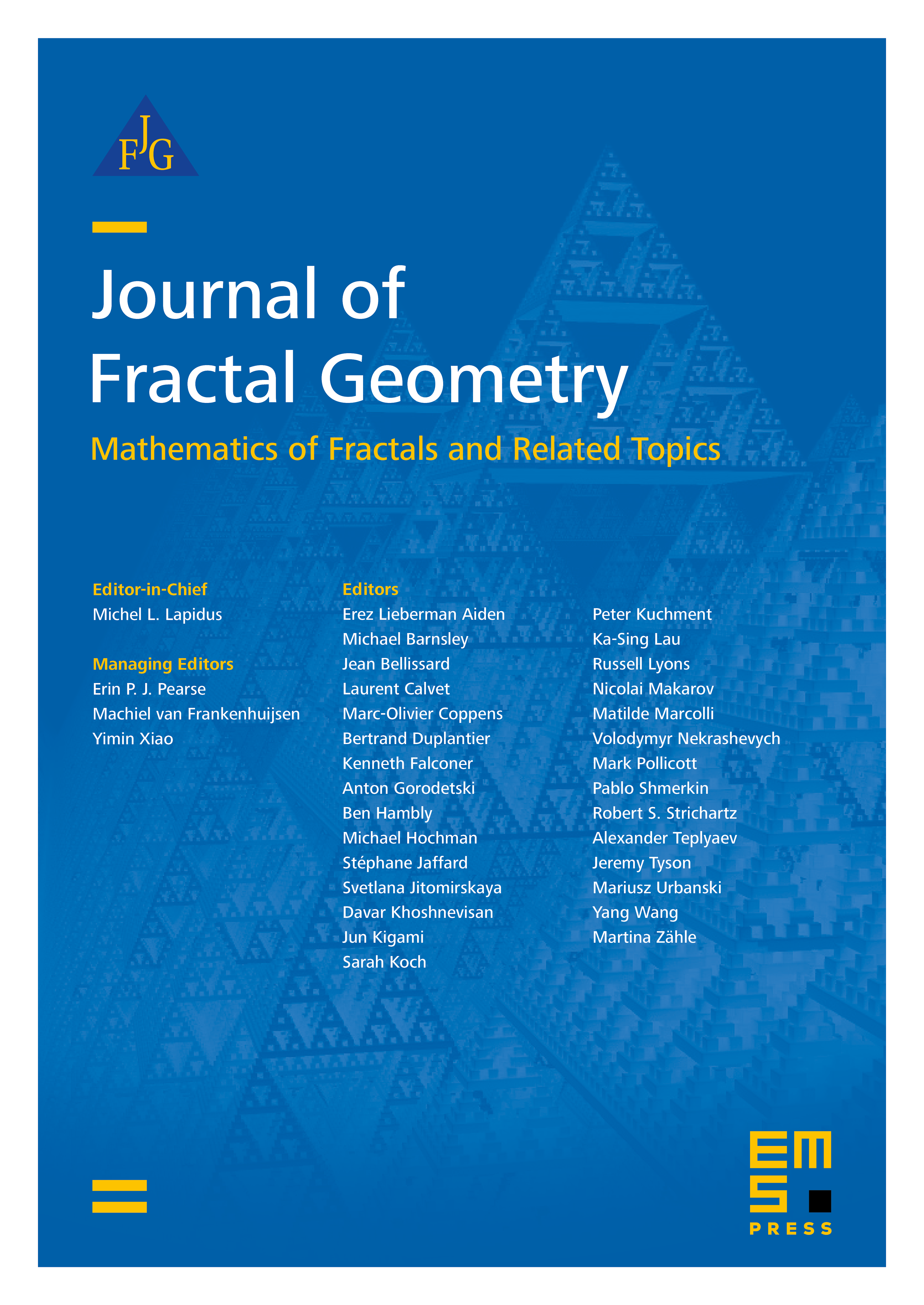Eigenfunctions of Perron–Frobenius operators and a new approach to numerical computation of Hausdorff dimension: applications in
Richard S. Falk
Rutgers University, Piscataway, USARoger D. Nussbaum
Rutgers University, Piscataway, USA

Abstract
We develop a new approach to the computation of the Hausdorff dimension of the invariant set of an iterated function system or IFS. In the one dimensional case that we consider here, our methods require only regularity of the maps in the IFS. The key idea, which has been known in varying degrees of generality for many years, is to associate to the IFS a parametrized family of positive, linear, Perron–Frobenius operators . The operators can typically be studied in many different Banach spaces. Here, unlike most of the literature, we study in a Banach space of real-valued, functions, . We note that is not compact, but has essential spectral radius strictly less than the spectral radius and possesses a strictly positive eigenfunction with eigenvalue . Under appropriate assumptions on the IFS, the Hausdorff dimension of the invariant set of the IFS is the value for which . This eigenvalue problem is then approximated by a collocation method using continuous piecewise linear functions. Using the theory of positive linear operators and explicit a priori bounds on the derivatives of the strictly positive eigenfunction , we give rigorous upper and lower bounds for the Hausdorff dimension , and these bounds converge to as the mesh size approaches zero.
Cite this article
Richard S. Falk, Roger D. Nussbaum, Eigenfunctions of Perron–Frobenius operators and a new approach to numerical computation of Hausdorff dimension: applications in . J. Fractal Geom. 5 (2018), no. 3, pp. 279–337
DOI 10.4171/JFG/62